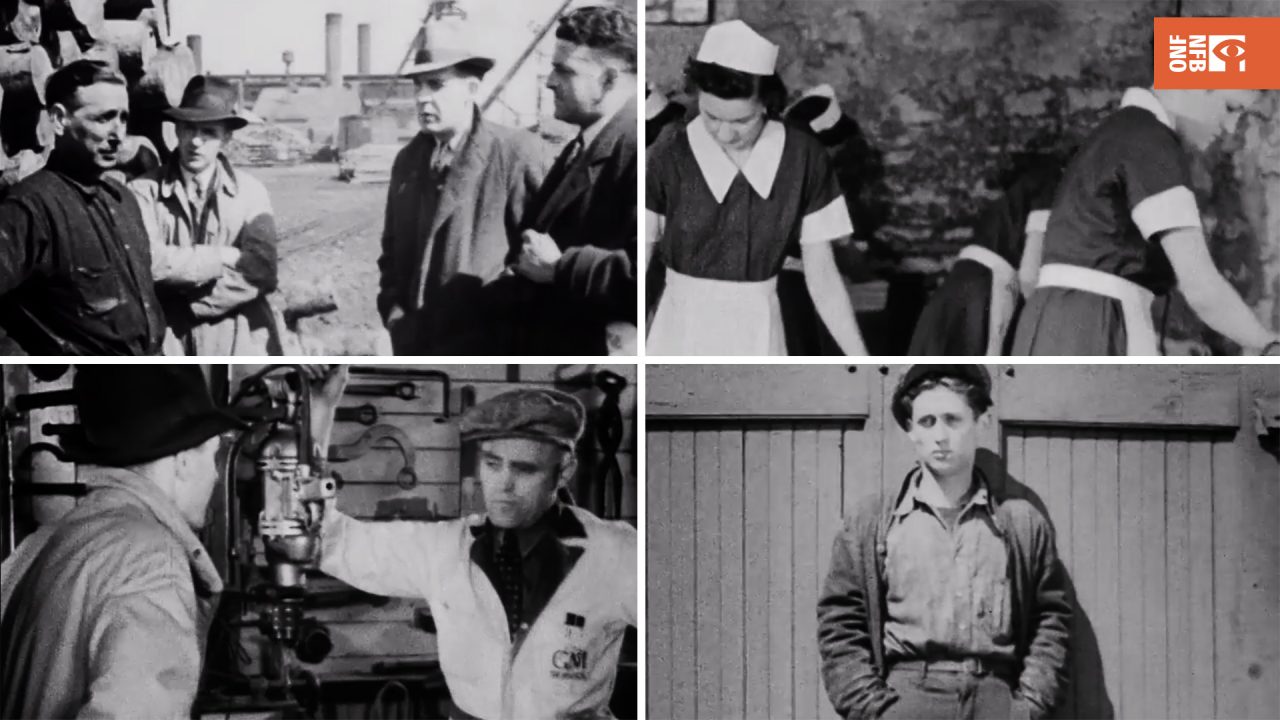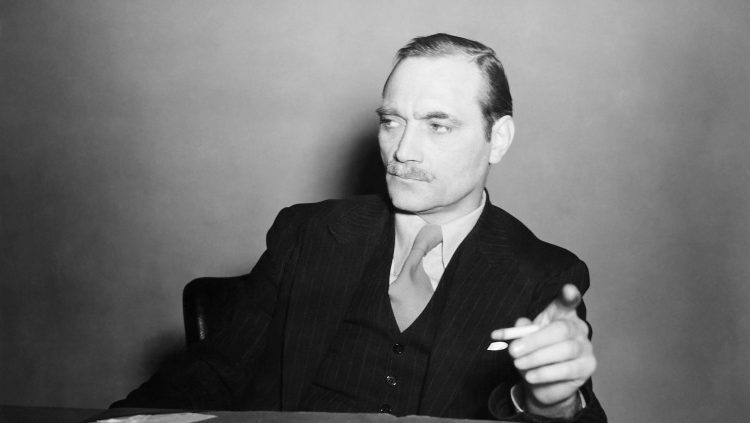
The Founding of the NFB
The Founding of the NFB
It’s widely believed that the NFB was created to make propaganda films during WWII. While it did produce many such films in its early years, this was not the primary purpose of the NFB.
The NFB was founded on May 2, 1939, not because of the war, but in response to the dire state of Canadian filmmaking at that time.
A Film Industry at Risk
During the 1930s, Canadian cinema was not faring well. Most films were produced by one of two entities: the private Associated Screen News (ASN) or the public Canadian Government Motion Picture Bureau (CGMPB). There were a few other private production companies out there, but their output was negligeable.
Although the ASN, a subsidiary of a New York company purchased in 1921 by Canadians Ben Norrish and Blaine Irish, prospered in the 1930s, it mainly produced newsreels for the American majors. That said, it did work with the NFB during the war and made several films for the Film Board. Un du 22e, made by an ASN crew, is considered the NFB’s first French-language film.
(Note: The Case of Charlie Gordon is considered to be the first English-language film – Julie Matlin)
The Case of Charlie Gordon, Stuart Legg, offert par l’Office national du film du Canada
CGMPB: The First Public Film Producer
However, CGMPB was the sole producer of Canadian films. Founded in 1917 as the Exhibits and Publicity Bureau, before changing its name to the Canadian Government Motion Picture Bureau in 1923, this first government film-production body had its heyday between 1920 and 1931.
In later years the organization went into decline – its output dwindled, its films were of poor quality, and they did not accurately depict the lives of Canadians. (These films were travelogues intended to attract rich Americans to Canada.) The reasons for its decline were many: a lack of professionalism, leadership and coordination between government departments; insipid subject matter; and, above all, inadequate funding, undoubtedly as a result of the Crash in 1929.
These cuts came at a bad time, because the switch to sound film would require considerable investment. In 1933, the situation was redressed, but by then it was too late. Several government departments were producing their own films, and the reputation of the CGMPB’s work abroad was suffering.
Also, Canadian movie screens were completely dominated by American films. The Canadian people’s image of their own country came solely from films made by their neighbours to the south, which presented stereotypes and a picturesque vision of the country that were a far cry from reality.
The Massey-McLean Report
The situation was critical. An initial government report, written by the minister Parmelee, who oversaw the CGMPB, denounced the poor quality of its films. It wasn’t until a report was released by Vincent Massey, the Canadian High Commissioner in London, however, that steps were taken to improve the situation.
Massey’s report, written by his secretary, Ross McLean, in February 1936, recommended an in-depth study of Canadian promotional films and proposed it be undertaken by John Grierson, a well-known filmmaker and founder of the British documentary movement. The document ended up on Prime Minister Mackenzie King’s desk in 1938, two years later. Concerned by the domination of American cinema, the prime minister was in favour of bringing more Canadian films to movie theatres. He was convinced by McLean and Massey to invite Grierson to Canada.
Enter John Grierson
John Grierson came to Canada in May 1938 with the mandate to write a report on the Canadian government’s film activities. He took stock of the situation at lightning speed and submitted his findings just a month later. Grierson’s report was highly critical and recommended founding a body to coordinate film production.
The report urged the Canadian government to adopt a centralized policy which, through its films, would promote Canada abroad and foster national unity at home.

The government, however, seemed to be in no rush. Grierson returned to England, but then in November 1938, he was invited back to Canada to implement his recommendations. Grierson himself wrote the bill to found a National Film Commission – later named the National Film Board – whose mandate was to help Canadians across the country to understand the ways of life and problems of their fellow citizens.
It was to produce and distribute Canadian films and coordinate film-related activities among all government departments. The CGMPB would be responsible for the technical aspects of film production. The plan was debated in the House of Commons and adopted at third reading on March 16, 1939. It was given Royal Assent on May 2 that same year.
The First NFB Commissioner
Once the bill was passed, a film commissioner had to be chosen. Grierson, in his report, had proposed Frank Badgely, already the head of the CGMPB, and Walter Turnbull, Mackenzie King’s secretary.
The declaration of WWII on September 3, 1939, forced the government to hire a commissioner quickly. The NFB’s board of directors considered two people: Badgely and the professor E.A. Corbett. The job was offered to Corbett, but he declined it. Grierson then accepted the post on a temporary basis, because he was still working for the British government’s Imperial Relations Trust.
The Merger of the CGMPB and the NFB
In June 1940, while WWII raged in Europe, Grierson proposed to merge the CGMPB and the NFB because of the imperatives of the war. The NFB’s board of directors felt no urgency to act, so on November 27, 1940, Grierson resigned, causing a huge commotion in parliament.
Finally, on June 11, 1941, an order in council dissolved the CGMPB and incorporated the NFB into the Department of National War Services. Grierson resigned from the Imperial Relations Trust then devoted himself full time to the NFB. The CGMPB and the NFB had, until that point, co-existed for nearly two years. Some films still mentioned the CGMPB’s name in their credits, such as Timber Front, made in 1940.
So the war was not a decisive factor in the founding of the NFB. The main factors were the country’s moribund film industry; the poor governance of the CGMPB, which was in the grips of serious management and budgetary problems; the relative absence of Canadian films from the country’s movie screens; and the stereotyped representations of Canada and its people in American films.
That said, the declaration of war catalyzed energies, accelerating the establishment of a centralized state cinema – as Grierson had envisaged it – to promote Canada abroad and foster national unity at home.



